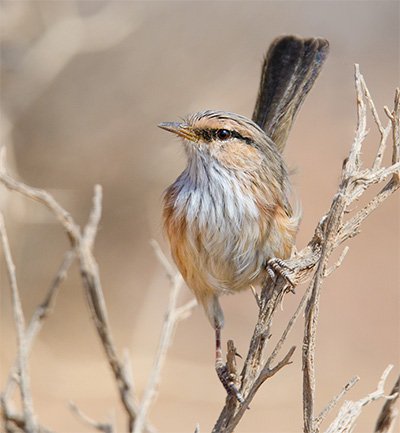Warbling on the Steppes
logan kahle, CC BY 2.0, via Wikimedia Commons
Scotoceridae
by Inspector Barry Mins on September 27, 2022Hey kids, welcome back to our series on the mysteries of created kinds.
This week, we move from Australia and Papua New Guinea into North Africa and the Middle and Near East. There is only one species of bird in this kind and eight recognized subspecies.

There is relatively little information available in English about this bird (though information in Arabic and Russian is more readily available). Despite living in countries known for desert, these birds prefer the steppes at higher elevations1. They nest in short bushes and breed in the early part of the year2. They eat insects and occasionally consume seeds as well.
Has anyone figured it out yet? Don’t feel bad if you didn’t—there is not a lot of work out there on this kind. This week’s kind is the Scotoceridae—the streaked scrub warblers. Stay tuned for next week when we go looking for a single species of toad from Central America.
Clue
Your clue for the week is:
This toad breeds in temporary pools of water but stays buried most of the rest of the year.
Ask a Question
Have you ever had a question about created kinds but didn’t know who to ask? Have you ever wanted to learn more about your favorite kind? Well, now you can! You can ask me, Inspector Barry Mins, a question! Have your parents help you fill out this form, and you might get your question answered in my column! If you have any questions about created kinds, feel free to send them my way!
Footnotes
- P. Bergier, M. Thévenot, A. B. van den Berg, and The Sound Approach, “Distribution, habitat, identification, and taxonomy of Streaked Scrub Warbler in Morocco,” Dutch Birding 35 (January 2013): 107–121.
- Bergier, Thévenot, van den Berg, and The Sound Approach, “Distribution, habitat.”
- © 2024 Answers in Genesis
- Privacy Policy
- Contact
- About


